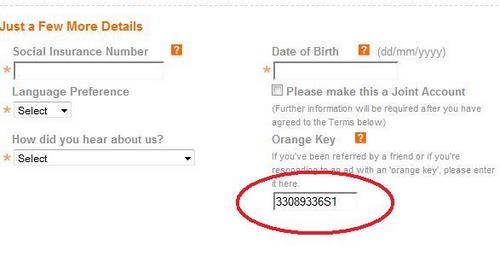Stuff White People Like is an amusing blog that mocks the cultural norms of the “educated elite”, a group that often denies having any such norms (yet, we clearly do). Similarly, Canadians both deny having a culture (some Canadians, without a trace of humour, claim they don’t have an accent) and hold particularly trivial things up as examples of “Canadian culture” (hockey, poutine, Anne of Green Gables and other such nonsense).
I’m not trying to provide the definitive guide, but thought I’d try to draw a rough sketch of Canadians, and some of our typical values and behaviours. The target audience for this being someone who has recently moved to Canada, is working with a Canadian organization, or is trying to make sense of a new Canadian ex-pat in their country or company.
Please feel free to argue with any of my assertions or add any more. As a Canadian it can be difficult to step outside of myself, so some of my own issues may creep in here.
American
Canadians often define ourselves in terms of how we are different from Americans. A famous beer commercial aired years ago which basically consisted of detailing minor ways that Canadians are different from Americans. The irony of all this is our cultures are VERY similar. If you take someone from Northern New York State or Minnesota they’re probably going to be more similar to a Canadian than to a Texan. Anything you’re unsure about Canadians, just treat us like an American and you’re on pretty safe ground.
Politeness
Canadians are known for being polite. Once while traveling in England my family had a good laugh when a tour guide characterized Canadians as “Americans with manners” (see first point). The plus of this is that Canadians you’re interacting with SHOULD usually be polite to you. The downside is that we can be touchy about behaviour we perceive as rude (joking around with or teasing a Canadians isn’t something to rush into).
Littering
When I worked down in San Francisco I was walking along the street with a Palestinian co-worker and I saw a man drop his fast-food cup in the gutter. After I’d been ranting about it for 2 or 3 minutes my co-worker started chuckling. “It’s really obnoxious to litter like that, eh?” I asked. To which he responded “No, it’s just that a couple other Canadians I’ve worked with would flip out if they saw anyone littering too”.
I’m not sure if this is just a special case of politeness, but littering is a hot-button with a number of Canadians, so if you do it, don’t do it in front of us. One of my friends’ father is about the calmest, nicest man you could possibly imagine and he almost got in a fist-fight when he saw a guy littering on the street.
Friendliness
I think many people are taken aback at how nice and friendly Canadians can be. If you start at a new company or community, people will go out of their way to make you feel welcome and help you establish yourself. I think it can be overwhelming for people at first (they think we’re after something), but I think it comes from seeing ourselves as nice, friendly people and trying to live up to that self-image.
Standoffishness
As much as we can be friendly, we don’t make friends quickly. A number of my friends have commented that they came to Canada, someone was super friendly to them so they assume they’re buddies. They ask the person out for a beer one night and the person blows them off (“no thanks, I’m going home to watch 24”). One man tried his damnedest to get me to go see the new Star Trek movie with him and it freaked me out. I ran into him at a university event and we had a nice chat I guess, then he REALLY wanted to be my friend. Mutual friends told me they told him that you can’t come on strong like that with Canadians. We tend to ease slowly into friendships.
One friend told me if someone in her home country was as nice to her as most Canadians are, it would mean they really want to be her friend, so she always finds it off-putting dealing with hyper-friendly Canadians who keep rebuking her friendship overtures.
Gluttony
Canadians like to eat. It can be a bit nauseating to new arrivals how much energy we put into thinking about our next meal (and often the amount of food we put away). We’re similar with Americans for this, so probably they wouldn’t be taken aback, but I think many new arrivals from other areas are (rightfully) grossed out by it.
It makes us pretty easy to please. If you have a meeting with Canadians, put out a tray of snacks (cookies or something) and we’ll probably get pretty excited.
Diversity
This is another double edged sword. The stereotype of a group of rednecks sitting around talking about “them” is pretty horrifying to most Canadians (and we do have an incredibly diverse population). I think if someone were wandering around making sexist, homophobic or racist comments, they’d get called on it by other Canadians pretty regularly. We like to think of ourselves as being a tolerant nation.
The other side of it is that often those attitudes are present, just concealed. One friend-of-a-friend who worked in Asia was upset by the blantant racism she encountered (she’s black). One time she had a job interview scheduled, told the person on the phone that she’s black, and the person then told her not to bother coming in. In spite of this (and as painful as it was for her), she said she prefered it in some ways to Canada. She said in Canada she never knew if race was a part of how people saw her or treated her (even people she’d known for years), and she at least liked that it was out in the open when she was in Asia.
So I’ll turn the post over to our readers at this point (Canadians and non-Canadians hopefully both have a perspective on this). Any of these you agree with? People who have moved to Canada, was it a big adjustment adapting to our norms? Any big points I’ve missed that you’d add?


 Google Street View went live today for Toronto, Vancouver, Hamilton, Kitchener, Waterloo, Windsor, Calgary, Canmore, Banff, Lake Louise, Montreal, Quebec city, Halifax. Apparently Saint John NB, Edmonton, Saskatoon and Winnipeg are next on the list.
Google Street View went live today for Toronto, Vancouver, Hamilton, Kitchener, Waterloo, Windsor, Calgary, Canmore, Banff, Lake Louise, Montreal, Quebec city, Halifax. Apparently Saint John NB, Edmonton, Saskatoon and Winnipeg are next on the list.